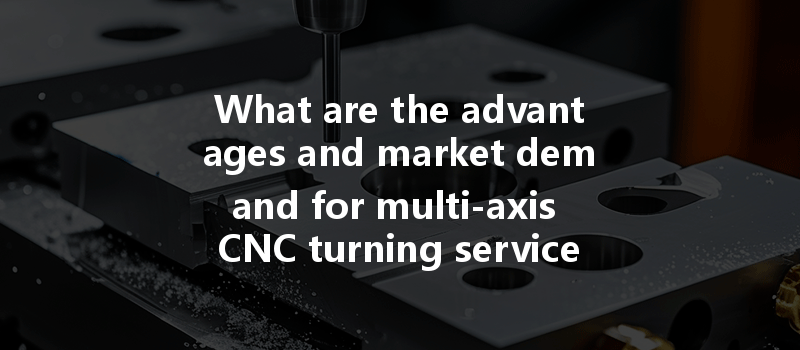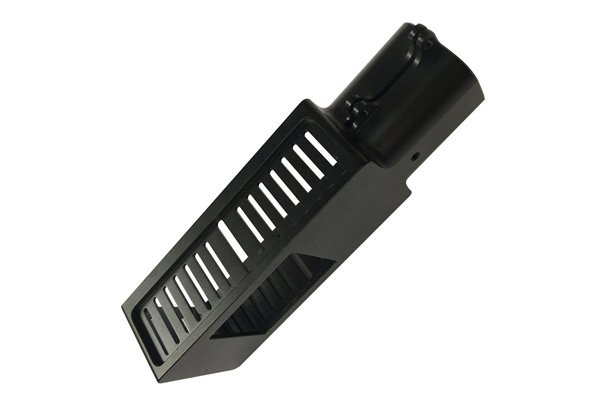Did you know that the global CNC machining market is projected to exceed $100 billion by 2026? As industries increasingly demand precision and efficiency in manufacturing, multi-axis CNC turning services have emerged as game-changers. This blog will explore the salient advantages of multi-axis CNC turning operations and delve into market demand, applications, and key industry trends.
Understanding Multi-Axis CNC Turning
Multi-axis CNC turning refers to the use of advanced computer numerical control (CNC) machines that can manipulate the workpiece on multiple axes simultaneously. While traditional CNC lathes primarily operate on two axes (X and Z), multi-axis machines—often featuring three, four, and even five axes—allow for more complex shapes and geometries to be manufactured with incredible accuracy.
Advantages of Multi-Axis CNC Turning
Precision is paramount in manufacturing, particularly in sectors such as aerospace, automotive, and medical devices. Multi-axis CNC turning allows manufacturers to create parts with intricate designs and tighter tolerances. The ability to rotate materials on multiple axes ensures that the cutting tools can access every angle, leading to unparalleled accuracy.
Traditional CNC machining often requires multiple setups for parts and components, which can be time-consuming and costly. With multi-axis CNC turning, multiple operations (like milling, drilling, and turning) can be performed in a single setup, significantly reducing machining time. This efficiency is particularly important in high-volume production scenarios, where every minute saved equates to reduced manufacturing costs.
The versatility of multi-axis CNC machines enables manufacturers to produce complex geometries that would be difficult or impossible to achieve with traditional methods. This design flexibility fosters innovation, allowing engineers to explore new product designs and materials without the constraints typically present in conventional machining processes.
Parts produced using multi-axis CNC turning often exhibit superior surface finishes compared to those made with traditional processes. The continuous motion of multi-axis machines facilitates smoother cuts and reduces the likelihood of tool marks or imperfections, resulting in higher-quality products that meet stringent standards.
Although the initial investment in multi-axis CNC machines can be substantial, the long-term savings realized through increased efficiency, reduced waste, and shorter lead times often outweigh the costs. Fewer setups, less handling of parts, and minimized errors all contribute to an overall lower total cost of ownership.
Market Demand for Multi-Axis CNC Turning Services
The demand for multi-axis CNC turning services has surged in recent years due to several factors affecting various industries:
With the automotive sector embracing advanced manufacturing technologies, the demand for precision-engineered components has skyrocketed. Multi-axis CNC turning allows automotive manufacturers to produce complex parts such as engine blocks, transmission housings, and suspension components with the required precision, driving demand for these services.
Multi-axis CNC turning is critical in the aerospace industry, where lightweight components are essential for fuel efficiency. The ability to produce intricate, lightweight parts from high-strength materials (such as titanium and advanced composites) is a key driver behind the growing need for multi-axis machining.

The medical device industry demands precision and reliability in every component. From surgical instruments to implantable devices, multi-axis CNC turning offers the capability required to manufacture complex geometries that meet strict regulatory requirements, contributing to its rising popularity.
As businesses become more customer-focused, the demand for customization has led to an uptick in small batch production runs. Multi-axis CNC turning is particularly well-suited for this task, as it allows for rapid prototyping and adjustments without the need for extensive retooling.
Key Technologies Behind Multi-Axis CNC Turning
Several technologies underpin the efficiency and effectiveness of multi-axis CNC turning operations:
Modern CNC machines are equipped with sophisticated software that enables precise programming. CAD/CAM (Computer-Aided Design and Computer-Aided Manufacturing) software allows engineers to model highly complex parts, generate G-code, and simulate machining processes before executing them on physical machines.
Real-time monitoring technologies provide insights into machine performance and part quality during production. Sensors can detect variations in cutting forces, temperatures, and vibrations, allowing for immediate corrections to ensure optimal machining conditions and maintain high-quality output.
Integration with robotic systems is revolutionizing multi-axis CNC turning services. Robots can automate loading and unloading of parts, minimizing human error and labor costs while increasing overall throughput. The combination of multi-axis CNC machines with robotics leads to enhanced efficiency and precision in manufacturing.
While not directly related to CNC turning, advances in additive manufacturing (3D printing) complement multi-axis CNC machines by allowing for rapid prototyping of components. Designers can quickly iterate on designs, test functionalities, and prepare them for full-scale production using multi-axis machining.
Multi-axis CNC turning services represent an essential evolution in manufacturing technology, offering numerous advantages, including enhanced precision, increased efficiency, and design flexibility. As industries continue to demand complex, high-quality components, the market for multi-axis CNC turning services is expected to thrive.
By understanding the critical advantages and market demands, manufacturers can position themselves to better serve their clients and gain a competitive edge. The key technologies supporting this process will further enhance the effectiveness and precision of CNC machining, paving the way for innovative solutions that meet the evolving needs of various sectors.
Ultimately, investing in multi-axis CNC turning technology is not just about keeping pace with industry trends—it’s about leading the charge towards a more efficient, precise, and customer-centric manufacturing landscape. As you reflect on the information shared, consider the possibilities that arise from embracing multi-axis CNC turning in your business strategy.
—






